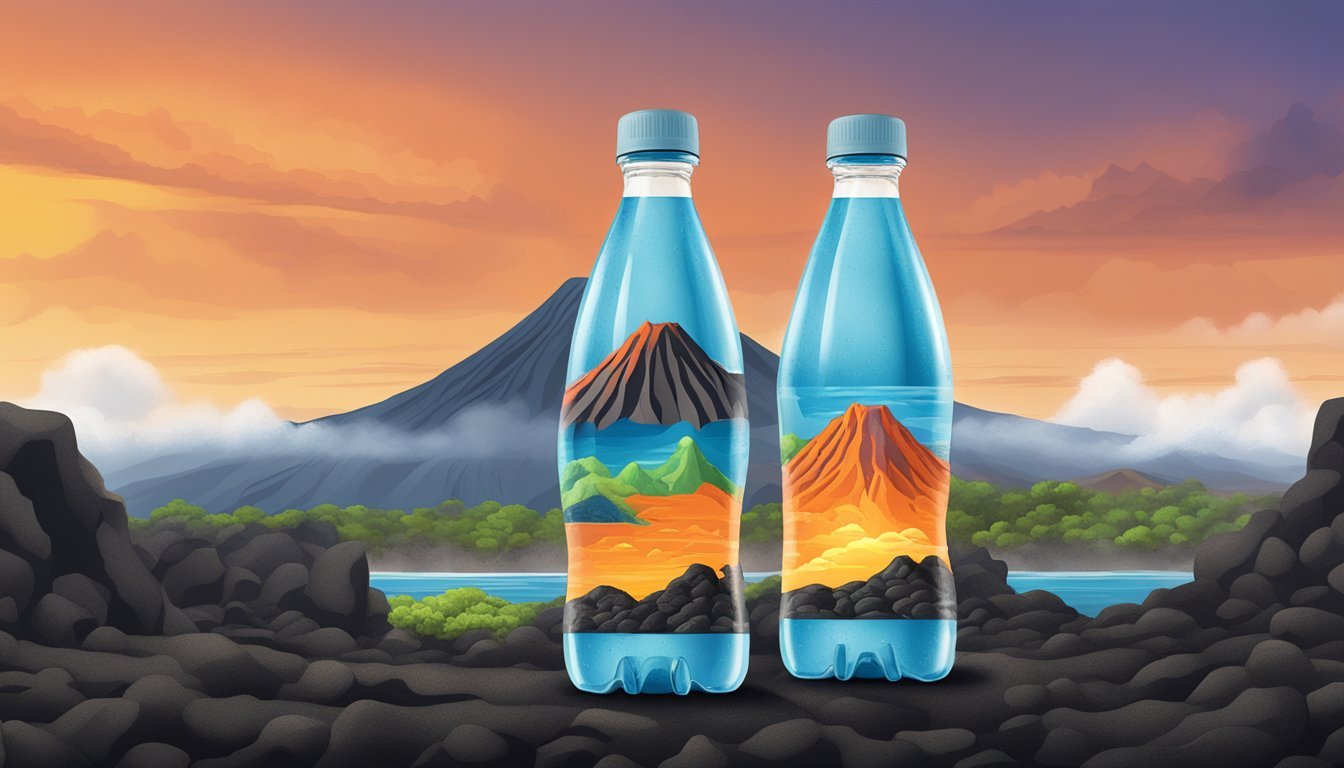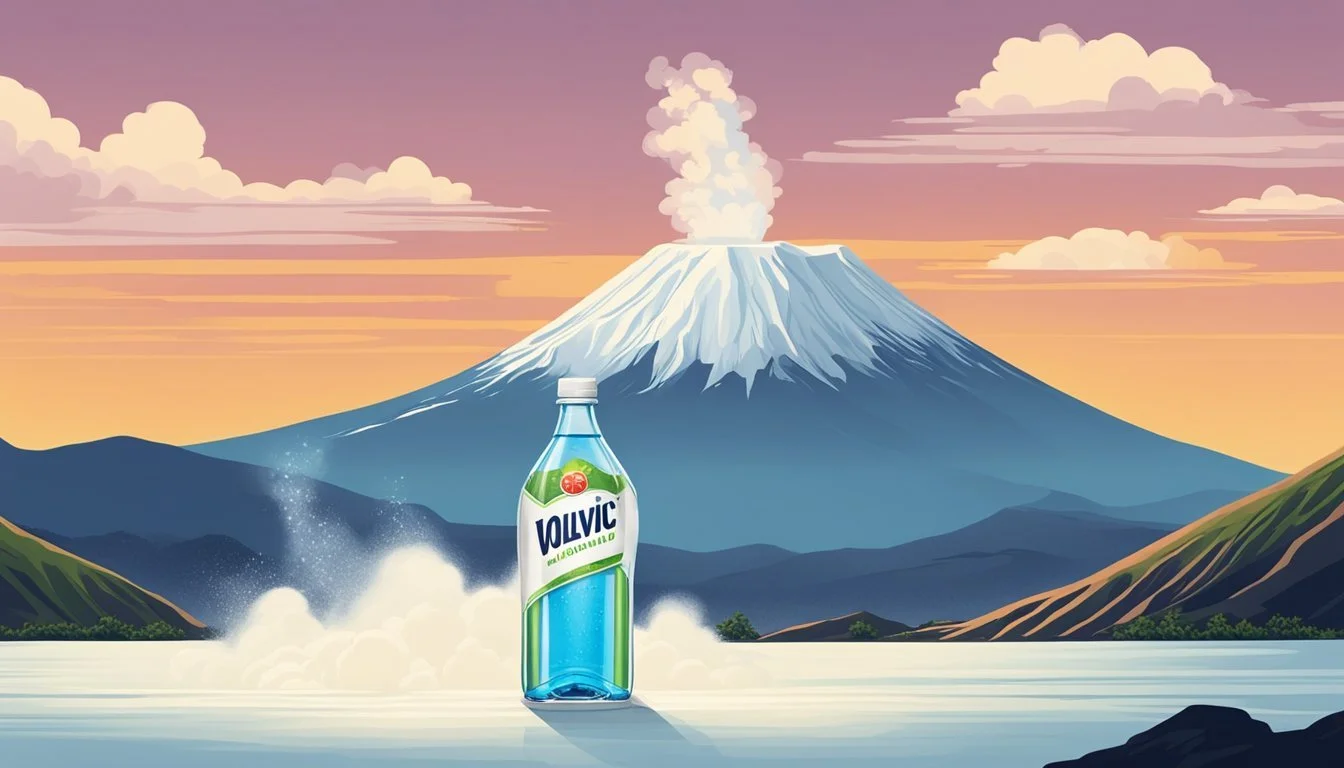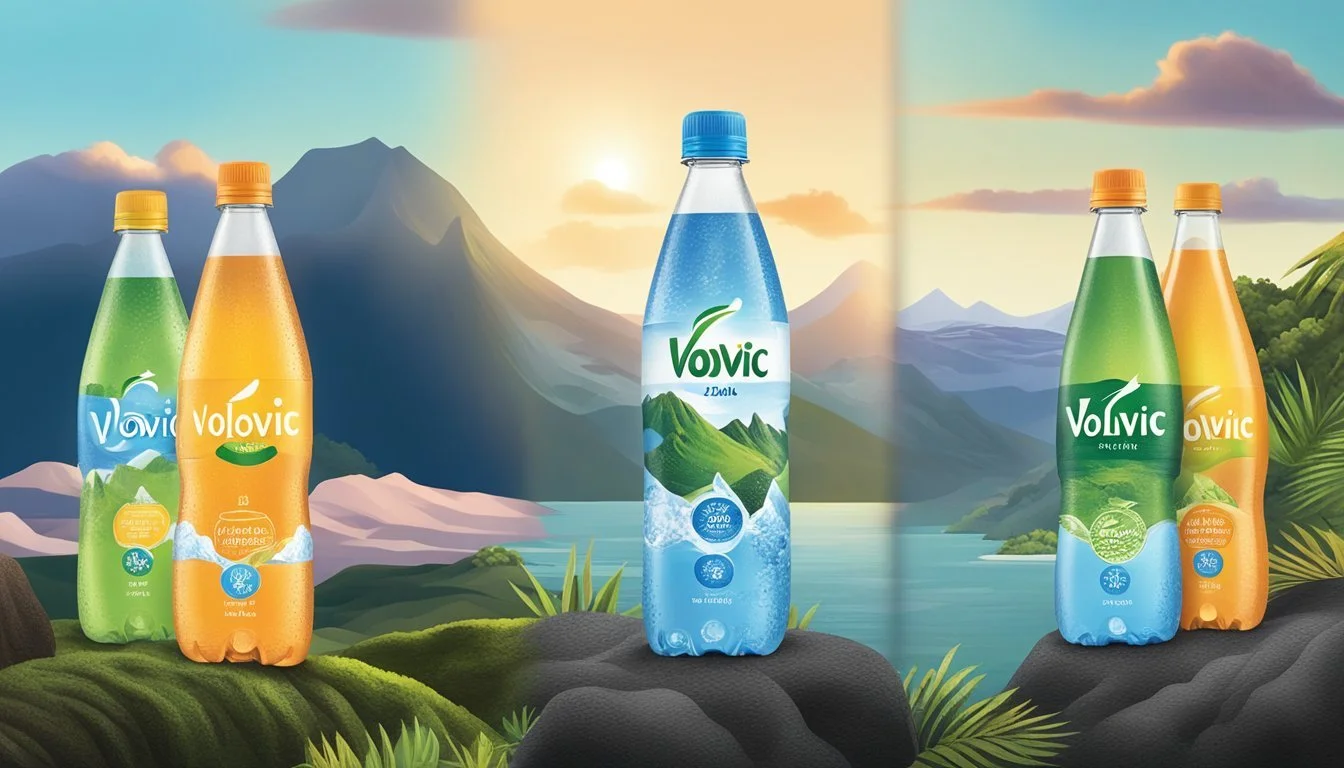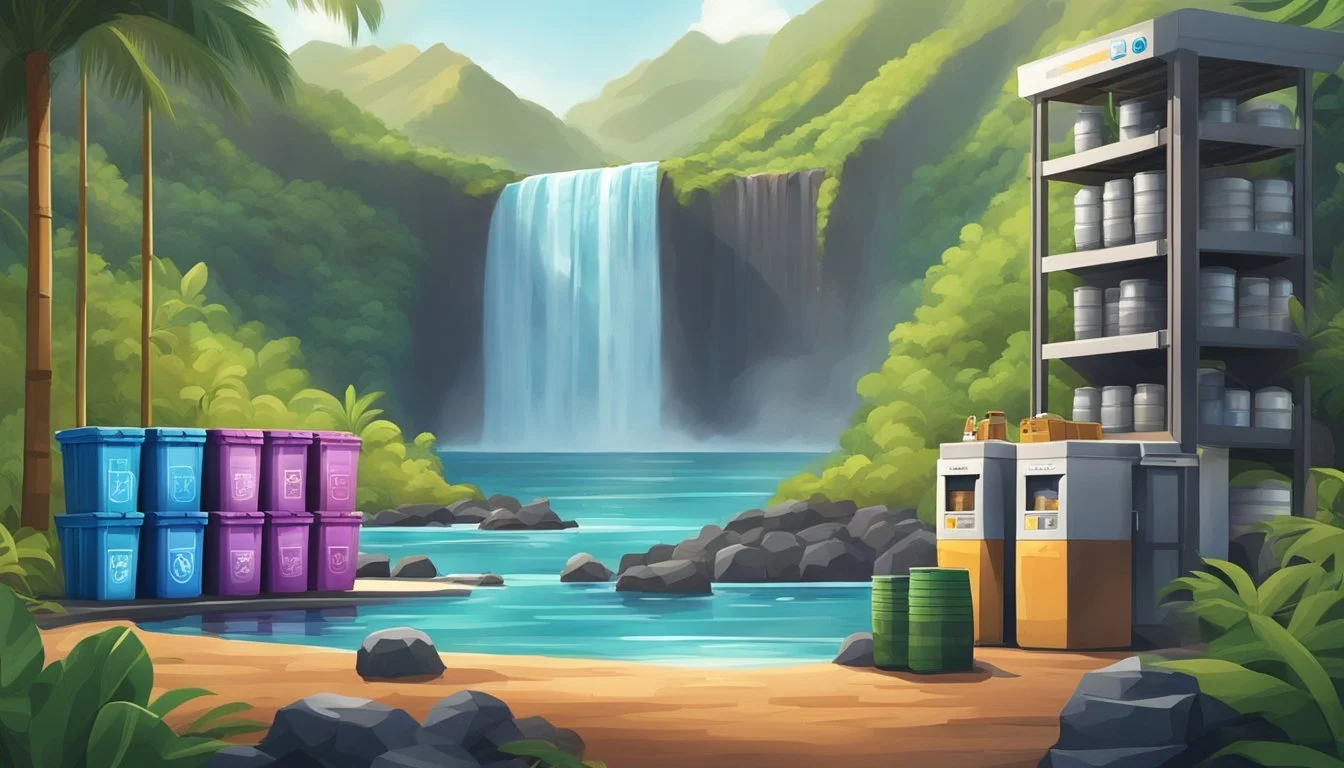Volvic vs. Hawai’i Volcanic
Comparing the Best Bottled Waters
Choosing between Volvic and Hawai’i Volcanic can feel like picking between two premium bottled waters with distinct characteristics and benefits. For consumers seeking a volcanic source, pristine nature, and an alkaline profile, Hawai’i Volcanic often stands out. Hawai’i Volcanic, known for its slightly sweet taste and alkaline properties, promotes better hydration and potential health benefits.
On the opposite side, Volvic's appeal lies in its neutral taste and consistent mineral balance, sourced from the ancient Auvergne volcanoes in France. Volvic has a long-standing reputation for purity and is often favored by those who prefer a milder water experience. Both brands leverage their unique origins, appealing to different preferences among bottled water enthusiasts.
The competition between Volvic and Hawai’i Volcanic highlights essential factors such as taste, pH levels, and brand philosophy. Analyzing these elements can help consumers make an informed decision about which bottled water best suits their needs and lifestyle.
Understanding Bottled Water
Bottled water comes in various forms, each with distinct characteristics. It is vital to consider the stringent regulations it must comply with and the environmental impact of its packaging.
Types of Bottled Water
Spring Water is collected from natural springs and typically contains natural minerals.
Purified Water undergoes processes like distillation or reverse osmosis to remove impurities.
Mineral Water must contain a certain amount of dissolved minerals and is sourced from mineral springs.
Artesian Water comes from a well tapping a confined aquifer.
Sparkling Water contains carbon dioxide, either naturally occurring or added.
The type of water dictates its taste, mineral content, and potential health benefits.
Regulatory Compliance
The FDA regulates bottled water as a food product in the United States. It ensures that bottled water meets rigorous safety and quality standards. The EPA sets standards for public drinking water systems, influencing how bottled water is monitored.
Labeling requirements are strict, indicating the source and treatment methods. Some premium brands meet additional certifications and standards to distinguish their product quality.
Contaminants are strictly monitored, including pathogens and chemical pollutants, ensuring consumer safety.
Environmental Impact and Sustainability
Packaging is a critical consideration. Bottled water is often sold in PET plastic, which is lightweight and recyclable. Many brands are shifting to 100% recycled plastic to reduce environmental footprint.
Glass bottles are another option, often perceived as more eco-friendly due to their reusability and recyclability.
Some brands emphasize eco-friendly practices, from sustainable sourcing to using biodegradable materials.
Sustainability efforts include reducing energy use in production and supporting water conservation projects. Choices between reusable and disposable packaging also play a role in environmental impact.
The industry is moving towards more sustainable and responsible production methods to minimize ecological damage.
Comparative Analysis: Hawai’i Volcanic vs. Volvic
Hawai’i Volcanic and Volvic are two distinct bottled water brands showcasing unique sources, filtration methods, and taste profiles. The differences between these brands stem from their origins and purification processes.
Source and Origin
Hawai’i Volcanic is derived from artesian wells located near the Mauna Loa volcano in Hawaii. The location gives it a distinctive nature, infused with minerals from the volcanic rock it permeates.
Volvic, on the other hand, sources its water from the ancient Auvergne volcanic region in France. This timely origin story stretches over millennia, with the water naturally filtered through layers of volcanic rock.
Filtration and Purity
Hawai’i Volcanic water undergoes a natural volcanic filtration process. As the water moves through porous volcanic rock, minerals are added, and impurities are naturally filtered out. This method ensures the water’s purity and enhances its mineral content.
Volvic also leverages natural filtration, benefiting from the extensive layers of volcanic sediment. It’s collected and kept pristine through strict quality control measures, maintaining a balanced mineral composition with low nitrates.
Taste Profile and Palate
Hawai’i Volcanic water features a refreshing taste with subtle mineral notes, attributed to the specific minerals absorbed during its volcanic filtration. The water is described as crisp and smooth, ideal for hydration and daily drinking.
Volvic offers a distinctive, slightly sweet taste with a velvety texture. This characteristic flavor comes from its unique mineral balance derived from the volcanic rocks of Auvergne, making it favored for its gentle and mellow profile.
Health and Hydration
This section explores the mineral content, alkalinity, and hydration efficacy of Volvic and Hawai’i Volcanic, detailing their specific impacts on health and hydration.
Mineral Content and Health Benefits
Volvic is rich in minerals like silica, which supports skin, hair, and bone health. It also contains calcium and magnesium, essential for muscle function and bone health. In contrast, Hawai’i Volcanic offers a naturally high mineral content due to volcanic filtration. This includes minerals like potassium and calcium, which are vital for maintaining healthy bodily functions.
Minerals play a significant role in bodily processes, from hydration to metabolic functions. Thus, choosing water with beneficial minerals like those found in these brands can have positive health impacts.
Alkalinity and pH Levels
Volvic typically has a pH level ranging from 7 to 7.5, which is neutral to slightly alkaline. This can help maintain the body’s balanced pH. Hawai’i Volcanic, on the other hand, boasts a pH level of 7.7 to 8.4, making it more alkaline.
Alkaline water like Hawai’i Volcanic is often praised for its potential to neutralize stomach acid and reduce acid reflux. The higher pH might also help improve overall hydration and support better nutrient absorption.
Hydration Efficacy
Volvic is known for its smooth taste and hydration qualities, attributed to its balanced mineral content. This helps in quick absorption and effective hydration. Hawai’i Volcanic offers similarly effective hydration with the added benefit of an alkaline pH, which some believe enhances hydration further.
While both brands provide excellent hydration, the slight alkalinity in Hawai’i Volcanic may offer a subtle edge in promoting hydration. This could be particularly beneficial for those seeking to improve their daily water intake.
Choosing between Volvic and Hawai’i Volcanic ultimately depends on personal preference and specific hydration needs. Both brands provide high-quality hydration with their distinct mineral profiles and pH levels.
Quality Indicators of Bottled Water
Quality indicators in bottled water often involve assessing mineral composition and ensuring rigorous safety standards through quality testing. These factors are crucial for consumers concerned with both taste and health implications.
Mineral Balance and Electrolyte Presence
Mineral content significantly impacts the taste and health benefits of bottled water. Calcium, magnesium, potassium, and silica are key components.
Calcium is essential for bone health, and its presence in water can contribute to daily intake. Magnesium supports muscle and nerve function. Bottled water like Hawai’i Volcanic is rich in these electrolytes due to volcanic filtration.
Potassium helps maintain fluid balance in the body, enhancing hydration. The balance of these minerals in bottled water defines its quality, contributing to a smoother, more refreshing taste.
Safety Standards and Quality Testing
Ensuring the safety of bottled water involves strict adherence to safety standards and comprehensive quality testing.
Safety standards include regular screening for contaminants such as bacteria, heavy metals, and pollutants. Brands must comply with regulations set by authorities like the FDA.
Quality Testing is performed using advanced technologies to detect impurities and guarantee water purity. Regular testing assures that the water remains free of harmful substances, providing safe and reliable drinking water.
Brand Proposition and Packaging Choices
Both Volvic and Hawai’i Volcanic appeal to consumers with distinct brand propositions and varied packaging choices that cater to different market segments and environmental considerations.
Market Presence and Consumer Choice
Volvic has established itself as a widely recognized global brand and is easily accessible through major supermarkets and convenience stores. It is known for its volcanic filtration process, which adds unique mineral content to the water.
Hawai’i Volcanic, on the other hand, positions itself in the premium segment, often available in high-end grocery stores and specialty retailers. This brand emphasizes its natural volcanic source and higher alkaline pH levels, aiming to attract health-conscious consumers.
Packaging Material and Design
Volvic predominantly uses recyclable plastic bottles for its packaging, with initiatives to increase the percentage of recycled content in each bottle. This comes with a lightweight design that aims to reduce overall material usage.
Hawai’i Volcanic opts for glass bottles which are considered more environmentally sustainable due to their reusable and recyclable nature. This choice enhances its premium image and appeals to eco-conscious buyers who prefer sustainable packaging options.
Environmental Responsibility and Business Practices
Volvic and Hawai’i Volcanic take distinct approaches to environmental sustainability, focusing on sustainable sourcing, carbon footprint reduction, waste management, and recycling policies.
Sustainable Sourcing and Carbon Footprint
Volvic sources its water from deep volcanic layers in France, emphasizing sustainable practices in its extraction process. This reliably sourced water is naturally filtered through six layers of volcanic rock, contributing to its purity and taste. Volvic is also certified as a B Corp™ and has committed to becoming carbon neutral, actively working to reduce its carbon footprint through comprehensive emission reduction strategies.
Hawai’i Volcanic draws water from artesian aquifers under Mauna Loa's porous lava rock, utilizing natural volcanic filtration. This method ensures an eco-friendly and renewable sourcing process. Hawai’i Volcanic also focuses on minimizing their carbon footprint by implementing energy-efficient practices and sourcing materials locally wherever possible. Both brands place a strong emphasis on environmental stewardship within their operational practices.
Waste Management and Recycling Policies
Volvic integrates waste reduction into its business model by using recyclable materials for its bottles and packaging. They have a robust recycling program to recover and repurpose used bottles, which aligns with their commitment to sustainability. Volvic continuously innovates in packaging solutions to reduce plastic use and environmental impact.
Hawai’i Volcanic also emphasizes recycling and waste management. The company uses environmentally friendly packaging materials and supports local recycling initiatives. They aim to reduce plastic waste by promoting the use of sustainable materials and investing in community education regarding recycling practices. Both companies strive towards reducing their environmental impact through diligent waste management and recycling policies.
More About Volvic
Mountain Valley Spring Water vs Volvic: Which Bottled Water is Better?
Volvic vs Kirkland Signature: Which Bottled Water is Better?
Volvic vs Richard's Rainwater: Which Bottled Water is Better?
Volvic vs Whole Foods Italian Still Mineral water: Which Bottled Water is Better?
More About Hawai’i Volcanic
Acqua Pana vs Hawaii Volcanic: Which Bottled Water is Better?
Antipodes vs Hawaii Volcanic: Which Bottled Water is Better?
Aqua Carpatica vs Hawaii Volcanic: Which Bottled Water is Better?
Arrowhead vs Hawaii Volcanic: Which Bottled Water is Better?
Boxed Water vs Hawaii Volcanic: Which Bottled Water is Better?
Castle Rock vs Hawaii Volcanic: Which Bottled Water is Better?
Core Hydration vs Hawaii Volcanic: Which Bottled Water is Better?
Deer Park vs Hawaii Volcanic: Which Bottled Water is Better?
Hawaii Volcanic vs 1907water: Which Bottled Water is Better?
Hawaii Volcanic vs Alkaline88: Which Bottled Water is Better?
Hawaii Volcanic vs Big Chill: Which Bottled Water is Better?
Hawaii Volcanic vs BodyArmor: Which Bottled Water is Better?
Hawaii Volcanic vs Cascade Mountain: Which Bottled Water is Better?
Hawaii Volcanic vs CBD Living: Which Bottled Water is Better?
Hawaii Volcanic vs Crystal Geyser: Which Bottled Water is Better?
Hawaii Volcanic vs Crystal Lake: Which Bottled Water is Better?
Hawaii Volcanic vs Essence pH10: Which Bottled Water is Better?
Hawaii Volcanic vs Kirkland Signature: Which Bottled Water is Better?
Hawaii Volcanic vs Liquid Death: Which Bottled Water is Better?
Hawaii Volcanic vs Open Water: Which Bottled Water is Better?
Hawaii Volcanic vs Proud Source: Which Bottled Water is Better?
Hawaii Volcanic vs Pure Life: Which Bottled Water is Better?
Hawaii Volcanic vs Purely Sedona: Which Bottled Water is Better?
Hawaii Volcanic vs Richard's Rainwater: Which Bottled Water is Better?
Hawaii Volcanic vs Simple Truth: Which Bottled Water is Better?
Hawaii Volcanic vs Talking Rain AQA: Which Bottled Water is Better?
Hawaii Volcanic vs Weird Water: Which Bottled Water is Better?
Hawaii Volcanic vs Whole Foods 365: Which Bottled Water is Better?
Hawaii Volcanic vs Whole Foods Italian Still Mineral water: Which Bottled Water is Better?
Ice Mountain vs Hawaii Volcanic: Which Bottled Water is Better?
Icelandic Glacial vs Hawaii Volcanic: Which Bottled Water is Better?
Just Water vs Hawaii Volcanic: Which Bottled Water is Better?
Mountain Valley Spring Water vs Hawaii Volcanic: Which Bottled Water is Better?
Nestle Pure Life vs Hawaii Volcanic: Which Bottled Water is Better?
Poland Spring vs Hawaii Volcanic: Which Bottled Water is Better?
San Pellegrino vs Hawaii Volcanic: Which Bottled Water is Better?
Smartwater vs Hawaii Volcanic: Which Bottled Water is Better?
Solan de Cabras vs Hawaii Volcanic: Which Bottled Water is Better?
Topo Chico vs Hawaii Volcanic: Which Bottled Water is Better?
Zephyrhills vs Hawaii Volcanic: Which Bottled Water is Better?






